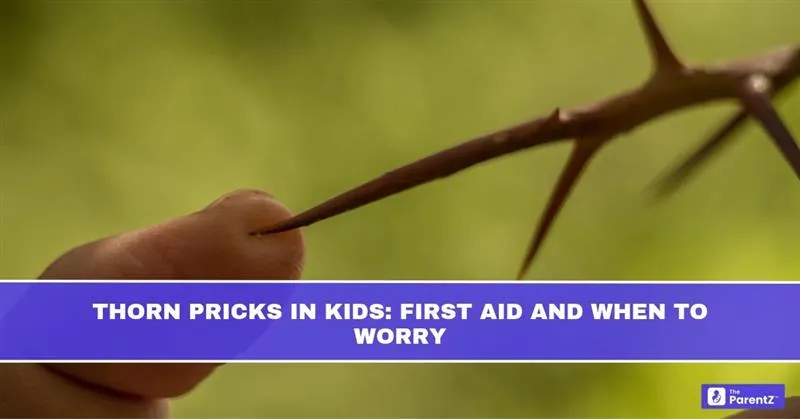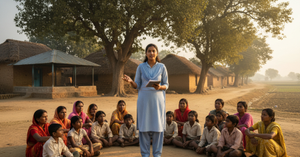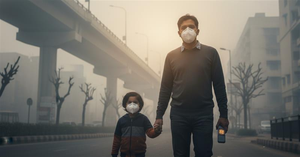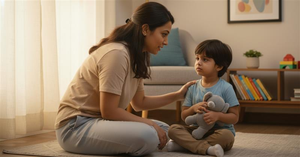Children are naturally curious and often explore gardens, parks, and outdoor areas barefoot or with little protection. In many parts of India and other tropical countries, thorny plants are common in playgrounds, rural paths, and home gardens. A thorn prick may appear to be a minor injury, but in children, it can sometimes lead to pain, swelling, infection, or even serious complications if not managed properly.
Types of Thorns and Their Common Sources
Not all thorns are the same, and the risk of complications depends partly on the plant involved.
Common everyday thorns:
In India and many other regions, thorns from roses, bougainvillea, lemon plants, and cactus are frequent causes of small pricks in children. These are usually superficial injuries, but can sometimes break inside the skin.
Agricultural and rural thorns:
Children in rural areas often encounter thorns from acacia (babool), ber, or date palms. These are hard, sharp, and more likely to cause deep puncture wounds. Acacia thorns in particular are well known to lodge deep in the skin and may break, leaving fragments that cause chronic pain or infection.
Wooden splinters and cactus spines:
Small cactus spines or splinters from wooden furniture may mimic thorn injuries. These are difficult to see with the naked eye and can remain in the skin unnoticed for several days, leading to persistent irritation.
Rare but troublesome thorns:
Certain exotic plant thorns, such as those of the blackthorn (Prunus spinosa) in Europe or date palm thorns, have been described in pediatric and orthopedic literature as causing severe inflammatory reactions, arthritis, or even bone infections when fragments remain lodged. While rare in India, similar reactions can occur with deeply embedded thorns from local plants.
How Thorn Injuries Occur in Children
Children often play barefoot, run in gardens, or climb small trees. In such settings, thorn injuries usually involve the soles of the feet, palms, fingers, or knees. Because the skin of children is thinner, even a small thorn can penetrate deeply. A thorn prick produces a puncture wound that is narrow at the surface but deep inside, which makes cleaning difficult and increases the risk of infection.
Immediate First Aid for Thorn Pricks
Prompt and correct first aid makes a major difference in preventing complications. According to NHS-style pediatric first aid recommendations and standard community health guidelines, the following steps are advised:
- Wash hands thoroughly before touching the wound to reduce the risk of contamination.
- Control bleeding if present by applying gentle pressure with a clean cloth or sterile gauze. Most thorn pricks bleed very little.
- Clean the area with running clean water and mild soap. Avoid harsh chemicals or strong antiseptics directly inside the wound, as they may irritate the tissue.
- Remove the thorn fragment if it is visible and superficial. Use sterilised tweezers cleaned with an antiseptic or alcohol. Do not dig deeply into the skin, as this may push the fragment further inside.
- Apply a clean dressing if the wound is on the foot or hand where further contamination is likely. A breathable adhesive bandage is usually enough.
- Observe for pain or swelling over the next 24 to 48 hours.
If the thorn cannot be removed easily, or if pain and swelling increase, medical attention should be sought.
When to Worry: Warning Signs after Thorn Pricks
Although many thorn injuries heal quickly, parents and health workers should remain alert to red-flag symptoms that indicate complications.
- Persistent pain and swelling that worsen rather than improve after 24 hours.
- Redness or pus discharge suggesting bacterial infection.
- Difficulty moving the affected finger, toe, or joint, which may mean that a fragment is lodged inside.
- Fever, irritability, or lethargy following the injury.
- Non-healing wound that remains painful for days or weeks.
- Deep puncture wound from plants known for hard, sharp thorns such as acacia or date palm.
In such cases, a medical assessment is necessary. X-rays or ultrasound may be used to detect retained thorn fragments, and antibiotics or minor surgical procedures may be required.
Possible Complications of Thorn Pricks in Children
Medical textbooks highlight several possible outcomes if a thorn prick is neglected.
Bacterial infection:
Soil and plant material on thorns may carry bacteria such as Staphylococcus or Pseudomonas. If the wound becomes infected, cellulitis, abscesses, or even spreading infection may occur.
Tetanus:
Although rare in immunised children, tetanus remains a concern in unvaccinated or incompletely vaccinated children. Tetanus spores live in soil and can enter through puncture wounds.
Retained foreign body:
Fragments of thorns may remain inside the skin and cause chronic irritation. Over time, this may develop into a granuloma, a small lump under the skin, which may need surgical removal.
Joint and bone involvement:
Deeply embedded thorns near joints can cause arthritis or osteomyelitis (bone infection). Blackthorn and date palm thorns are especially noted in orthopedic literature for this complication.
Allergic and inflammatory reactions:
Some plant thorns carry plant toxins or cause strong immune responses. This can lead to persistent swelling, delayed wound healing, or unusual skin rashes.
The Role of Vaccination and Community Measures
According to pediatric and community medicine guidelines, prevention of severe complications depends on both individual and public health measures. Children must receive complete immunisation against tetanus as per the national immunisation schedule. In community practice, health workers should educate families about the importance of footwear for children, especially in rural or agricultural areas. Schools and parents should ensure safe play areas free from thorny bushes and discarded wooden splinters.
Home Care after First Aid
If the thorn has been removed and the wound is clean, parents should continue to observe the child for at least 48 hours. The dressing should be changed daily, and the wound should be washed gently with soap and water. If pain persists, paracetamol may be given in the correct pediatric dose. Children should be discouraged from scratching the wound or walking barefoot until the injury heals.
When to See a Doctor Immediately
Parents should take a child to a healthcare provider urgently if:
- The thorn is deep, large, or difficult to remove.
- A fragment is suspected to remain under the skin.
- There is spreading redness, swelling, or pus discharge.
- The injury is near the eye, face, or genitals.
- The child is not immunized or has missed tetanus vaccination doses.
Conclusion
Thorn pricks in children are common but should never be ignored. Most are minor and heal with simple first aid, but a few can lead to serious complications if a fragment remains or infection develops. Parents, teachers, and community health workers must know the correct first aid steps, the warning signs of complications, and the importance of vaccination. With careful attention and timely medical advice, thorn injuries can be managed effectively, allowing children to continue enjoying outdoor play safely.








Be the first one to comment on this story.